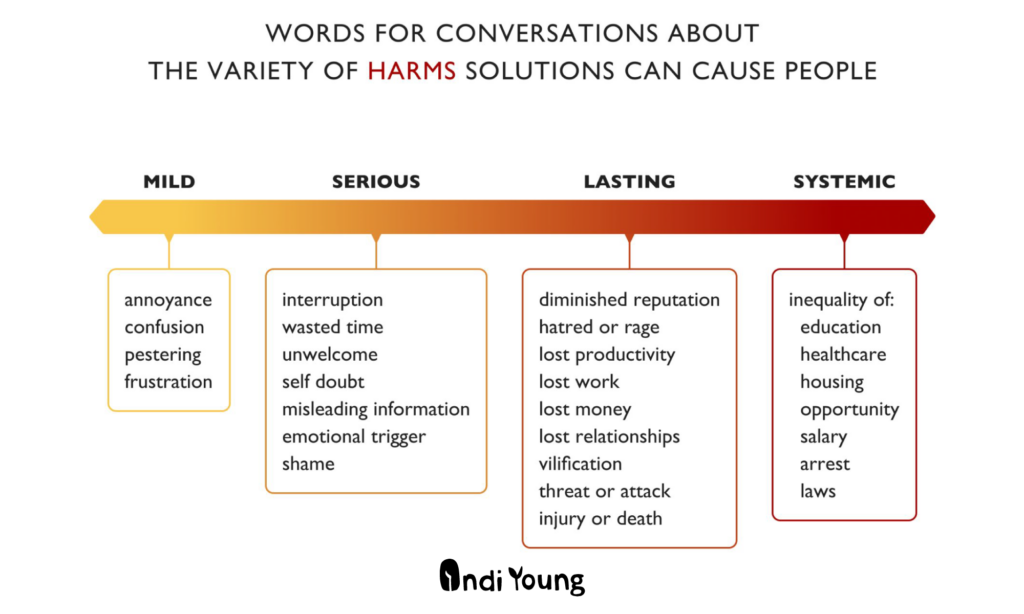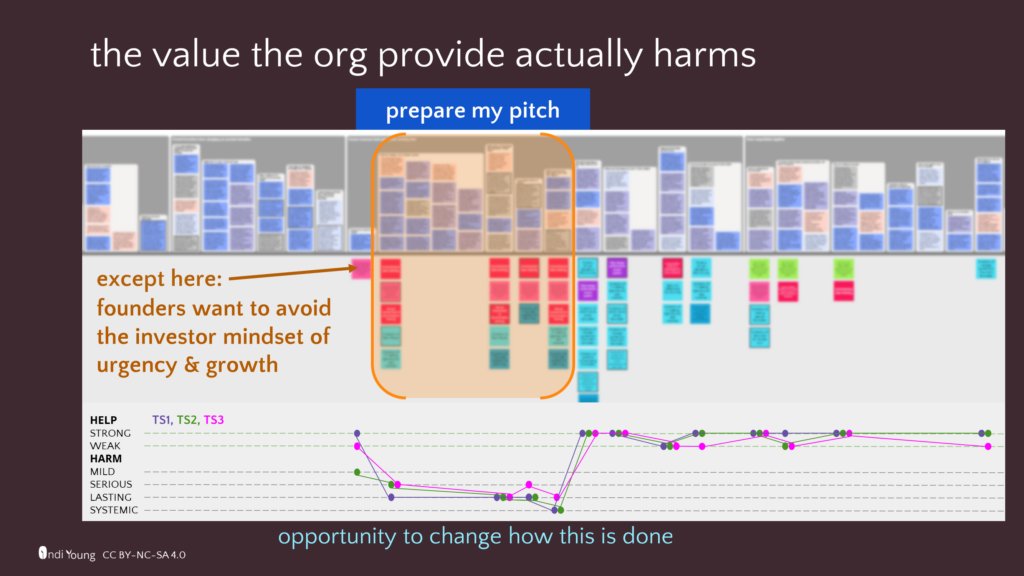
It’s not simple
Complex systems are beautiful. And powerful. They support all the players within the system.
Right now, our rules-based systems do not evolve nor flex to support everyone. Machine learning has no ethics. Big data only predicts big crowd behavior.
Solutions are created for individuals. Help your team shift their mindset to build complex systems in support of humans and the non-humans & environment.
Taking the Perspective of People, to Build a Future for Your Org
🧭 Start in the problem space – Ask a variety of people how they mentally approach a goal, intent, or purpose
🏙️ Visualize cognition with the Mental Model Skyline – See how your tech stack supports (or misses) key cognitive patterns.
👥 Support diverse interaction styles – There’s no “right way” to approach a goal. Your product roadmap can branch.
🤖 Train AI to adapt, not impose – The next evolution of UX is AI that adjusts to users’ thinking styles—not the other way around.
💬 “Cognitive Empathy isn’t soft—it’s strategic data we’ve been ignoring for too long.” – Indi Young
🥅 Make strategic decisions that serve real human variety and your org’s goals at the same time.
As a field, solution creators have been trying to get organizations to focus on human outcomes. This effort has always struggled against business aims of more growth, more profit each year. The two mindsets often don’t mesh.
Re-centering on people’s goals or intents is a way to actually serve business goals, increase adoptions, reduce friction & churn, and innovate in new directions. The mental model skyline shows current gaps to fill in over the coming years. You can see the state of how your solution supports people, by “tower” in the mental model diagram, by thinking style, and by lens (interior cognition caused by discrimination, physiology). You can benchmark these gaps by level of support (weak, good) or harm (mild, serious, severe, systemic). Then going forward you can track improvements to your solutions in these benchmarks. You can fill in gaps and see clear paths toward growth. In a nutshell, the mindset shift is to move toward thinking as a person addressing their purpose.
There is a lot here. It’s powerful. It begins with listening deeply and developing cognitive empathy
Help your organization embrace ambiguity and treat humans as complex beings with agency.
The Mental Model Skyline
This is a visual opportunity map, laid out a bit like a city skyline. The mental model skyline shows where an org’s capabilities support people’s cognition, and where it does not. The skyline is made up of towers with windows in them. Each window represents a summary of inner thinking, an emotional reaction, or a personal rule from people as they addressed their purpose.
The patterns that form these towers emerge from qualitative data of listening sessions that were all framed by that same purpose.
The tower patterns emerge as city blocks, and sometimes those city blocks form into neighborhoods. It depends upon the breadth and richness of what we are hearing in the listening sessions.
When patterns of thinking styles appear in the same data, then we can layer these thinking styles on top of the windows in the towers, allowing product strategists greater resolution into what parts of their solutions are intended for and successfully support different thinking style approaches to the purpose.
Below the city skyline are the capabilities present in the solutions your organization has created. Aligning these capabilities beneath the towers forces your organization to see from a human perspective. The gaps, weaknesses, and unintentional harms that result are easy to identify. The difficult part is prioritizing which of the different opportunities to provide better support are of importance to the organization right now. That is where product strategists and stakeholders can collaborate on initial direction and get started on the journey toward intentional human support.
Of course, you and your stakeholders need to trust each other, first.
If you are curious, here is the story about the genesis of mental model diagrams, thinking styles, and opportunity maps.
This abductive research shows the complex systems running through people’s minds as they address that purpose. Why abductive? Because it’s about understanding people addressing their purpose, not about understanding interactions with our solutions, not about generating new solution ideas. You will get there, but first you need this knowledge to be able to support a greater diversity of humans.

The sparklines below the skyline are measurements from evaluative studies about the capabilities aligned below the towers. Importantly, the participants for these studies are recruited by thinking style, so values can be plotted here. The points you see demonstrate an initial state, before a team starts making improvements. As improvements are made over the years, new measurements are made, and the points on the sparklines are updated. The whole team can see it change. This continues until each thinking style is supported in a way that works for their approach.
Supporting Humans: More Important than Creating Solutions

Yeah, that sounds weird, doesn’t it? It’s not. Digital service and product design is caught up in methods that focus mostly on measuring the success of the solution, not the success of the human. We are not paying attention to the more serious harms we unintentionally cause, like self-doubt and feeling unwelcome. Rather than waiting for lawsuits, we should be looking at potential severe harms, like loss of health, freedom, life, money, or time. What about intentionally mapping out systemic harms that our solutions perpetrate?
Generating respect, dignity, and a sense of making progress in community with others–those are what lives are made of. And those are what get crushed in the zeal to push technology forward.
Indi is a technologist, but not a solution-ist. The tool she reaches for most often is deep listening. She’s one of the people molding our methods to a more human shape. She is spreading the idea of paying attention to people. Indi helps you support humans, rather than simply create tools.
Indi gives practitioners and leaders powerful mindsets and awareness. Depending on their own context, developers, product owners, designers, researchers, and leaders can adjust these mindsets and awareness to best work within their organization.
Harness the mindset of supporting humans.

Research for Ethical Product Strategy
We can’t go on solving things only based on our own thin understanding. Even if we have diverse teams, our ideas are based on our own experiences. Who speaks for everyone else out there who may think and react differently? It’s time to bring ethics to bear. And to do that, deeper knowledge is needed. Problem space research provides that knowledge, and is deeply similar to futures research, opportunity research, foundational research, and exploratory research.
It’s time to:
Compare JTBD & Data Science That Listens
Jobs To Be Done (JTBD) has become popular, and in good hands it has the potential to produce deep understanding similar to our method, Data Science That Listens. The trouble is that it’s most often applied to understand a process or a buying decision, instead of understanding what people are trying to address. And it does a lightweight job of understanding emotional reactions and personal rules. It also doesn’t differentiate groups of people by their thinking style–only by their role in the process.
Our method focuses on a much broader variety of things that people think about carefully.
So, JTBD, in hurried contexts, tends to circle back to the same old “functional specification” that we started with in software design.
This video starts with Indi’s opinion about the market-sizing survey used toward the end of a JTBD. This graph then becomes part of an example where a practitioner, Elizabeth Thapliyal, started with listening sessions, made a mental model skyline and thinking styles, and then used that knowledge to create a deeper JTBD market-sizing survey.

